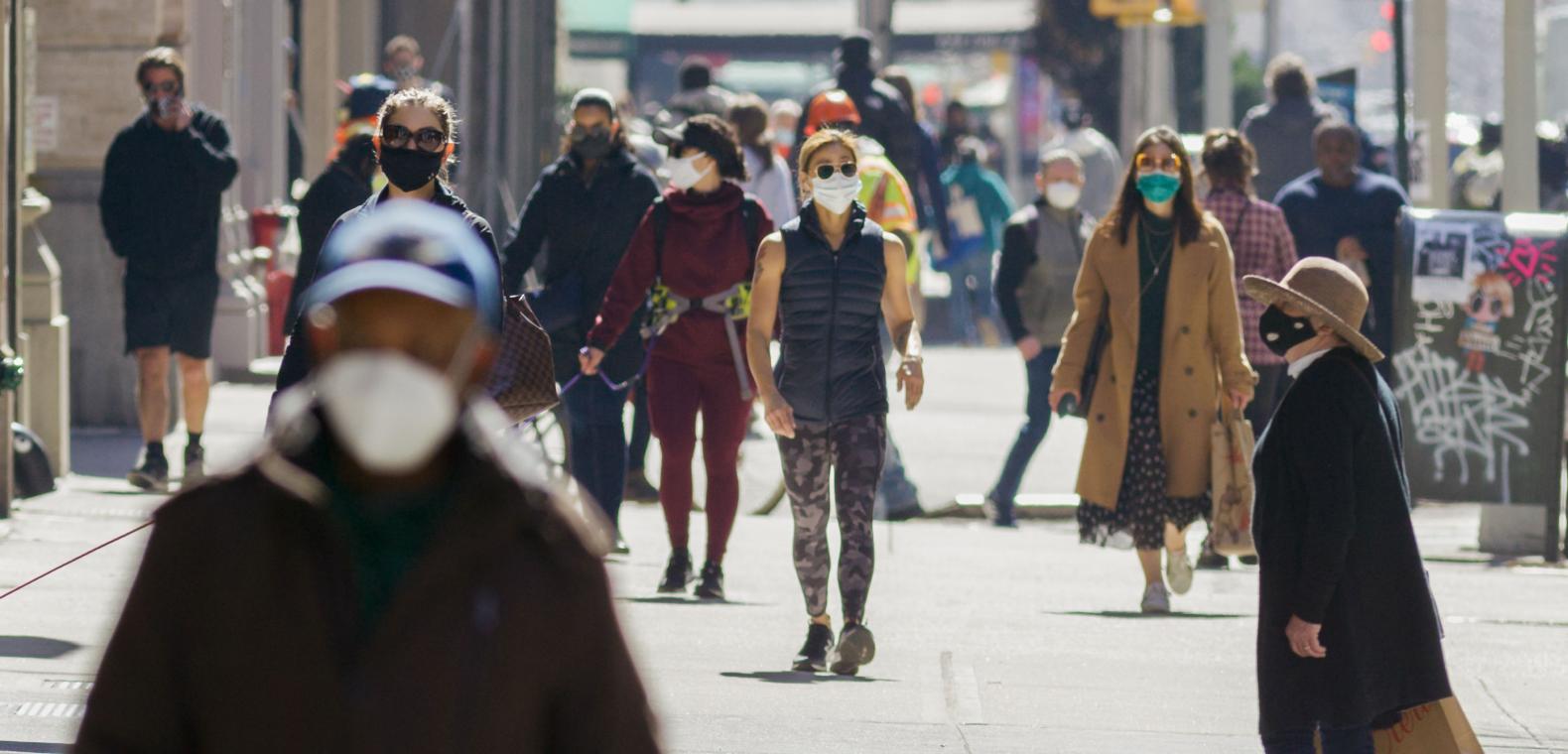
Population Health News
Faculty, postdoctoral fellows, graduate students, affiliated investigators, and staff at NYU Langone’s Department of Population Health consistently garner national awards for their work and accomplishments. They also speak at many events and are quoted in major media outlets.
Researchers to Examine Overdose Prevention Centers
Read More
Community Health Workers Help Patients Control Blood Pressure
Read More
Improvements Needed in Contact Tracing
Read More
New Health Atlas Looks at Asian American, Native Hawaiian, and Pacific Islander Health in the U.S.
The newly published Health Atlas tool, an innovative resource developed by the NYU Center for the Study of Asian American Health (CSAAH) in partnership with its National Advisory Committee on Research and Scientific Steering Committee, visually documents health disparities in risk factors, disease prevalence, and key health topics across the geographic spectrum, disaggregated by Asian American, Native Hawaiian, and Pacific Islander (AANHPI) subgroups. Key findings highlight differences in AANHPI health outcomes and risk factors by geographic location compared to the overall U.S. population, and identify gaps in the data. For more information about how the coronavirus disease (COVID-19) pandemic has impacted Asian American communities, read CSAAH’s Asian American COVID-19 Experience.
Department of Population Health Launches NeuroCOVID Project
As the COVID-19 pandemic continues to unfold, there is growing evidence of COVID-19-related neurological conditions, creating an urgent need for standardized collection and compilation of high-quality data to better understand their prevalence, natural history, and aftereffects. In response, NYU Langone has launched an invaluable international resource called the COVID-19 Neuro Databank/Biobank (collectively, the NeuroCOVID Project), led by Andrea B. Troxel, ScD, and Eva Petkova, PhD, with funding support from the National Institute of Neurological Disorders and Stroke. The goal of the NeuroCOVID Project is to create and maintain a national resource of de-identified clinical data and biospecimens to document and study new and worsening neurological conditions of varying degrees of severity experienced by people of all ages who have COVID-19. The project also incorporates data and biospecimens from children born to mothers who had COVID-19 anytime during pregnancy, labor, or delivery.
Black Patients Hospitalized with COVID-19 Have Lower Risk of Death Than White Patients
Black and Latinx patients account for a disproportionate share of COVID-19 deaths, but a new study by Department of Population Health faculty published in JAMA Network Open finds that Black patients, once hospitalized and after controlling for other serious health conditions and neighborhood income, were less likely to have severe illness, die, or be discharged to hospice compared with white patients. Researchers evaluated electronic health record data for 9,722 patients tested for COVID-19 throughout the NYU Langone Health system between March 1 and April 8, 2020. There were no significant differences in death risk between white patients and Latinx and Asian patients, however, Asian patients were less likely to test positive for COVID-19, but more likely to be hospitalized compared to white patients.
Findings suggest that other structural factors such as poor housing conditions, poverty, and unequal healthcare access may contribute to the higher numbers of out-of-hospital deaths in Latinx and Black communities, and should be considered in future research. This story was covered by The New York Times, WebMD, EurekAlert, and other news outlets.
Drs. Thorpe, Williams, and Shelley Receive NIH Award to Improve COVID-19 Testing for New York City Public Housing Residents
Lorna E. Thorpe, PhD, MPH; Natasha J. Williams, EdD, MPH; and Donna Shelley, MD, MPH, are principal investigators of a new two-year $2.2 million grant from the National Institutes of Health (NIH). The Rapid Acceleration of Diagnostics for Underserved Populations (RADx-UP) program supports community-engaged research to improve COVID-19 testing for New York City Housing Authority (NYCHA) residents. RADx-UP supports projects designed to quickly implement COVID-19 testing strategies in populations disproportionately affected by the pandemic.
This research builds on the team’s current NIH-funded work to evaluate the health impact of smoke-free housing policies, which has fostered longstanding partnerships between NYU Langone, NYCHA, and their resident boards. The initiative also partners with the New York City Department of Health and Mental Hygiene, the NYC Test & Trace Corps, and three NYCHA-facing community organizations—Red Hook Initiative, Henry Street Settlement, and Harlem Congregation for Community Initiatives. Other collaborating investigators from the Department of Population Health are Anna Bershteyn, PhD; Nadia S. Islam, PhD; and Charles J. Neighbors, PhD, MBA.
National Heart, Lung, and Blood Institute Awards $9.7 Million to Launch ADDRESS BP Study
The National Heart, Lung, and Blood Institute has awarded Olugbenga G. Ogedegbe, MD, MPH; Nadia S. Islam, PhD; and Antoinette M. Schoenthaler, EdD, a $9.7 million grant over the next seven years to evaluate an innovative, multi-level intervention to help address social determinants of health that underlie the disproportionate impact of hypertension on the Black community. Investigators will assess implementation of nurse case management, home blood pressure monitoring, and community health workers delivered as an integrated community-clinic linkage model for Black patients at NYU Langone practices citywide. The project, Actions to Decrease Disparities in Risk and Engage in Shared Support for Blood Pressure Control in Blacks (ADDRESS BP), will extend across a network of 20 NYU Langone community-based primary care practices serving Black populations and partner with the community advisory board of the Clinical and Translational Science Institute, as well as HealthFirst.
People of Color Dying at Higher Rates from COVID-19 for Reasons Beyond Income Disparity
While data and news reports show that Black and Latinx communities are disproportionately affected by the COVID-19 pandemic, the role that neighborhood income plays in COVID-19 deaths is less clear. New research published in JAMA Network Open, led by Samrachana Adhikari, PhD, and her team of investigators—Andrea B. Troxel, ScD; Nicholas Pantaleo; Justin Feldman, ScD; Olugbenga G. Ogededbe, MD, MPH; and Lorna S. Thorpe, PhD, MPH—examines the interplay between race, ethnicity, and income on COVID-19 cases and related deaths in 10 major U.S. cities. The researchers found that non-white counties had higher cumulative incidences and deaths compared to predominantly white counties—and this was true for both low- and high-income communities. These findings suggest that racial disparities in COVID-19 cases and deaths exist beyond what can be explained by differences in poverty rates. This study was covered by Time, City Limits, U.S. News & World Report, Spectrum News NY1 (VIDEO), Daily Mail, Medical Xpress, Global Health Now, NPR, and many other media outlets.
City Health Dashboard Develops New Tool for Determining Covid-19 Risk by Cities and Neighborhoods
The City Health Dashboard, an active project of the Center for Innovation in Measuring Population Health, has been updated with a new measure called the COVID Local Risk Index. This metric estimates the potential for COVID-19 infection and risk for more severe COVID-19 outcomes among residents within cities and across neighborhoods. The Index uses local data and incorporates factors such as race and ethnicity, age, household crowding, poverty, and underlying health conditions. Designed to be comparable across cities and neighborhoods, the tool can help policy makers allocate limited resources to communities most in need. This development was covered in Crain’s New York (subscription required) and Consumer Affairs. In a parallel story, The New York Times Magazine mentions the City Health Dashboard and features quotes from Marc N. Gourevitch, MD, MPH, and Lorna S. Thorpe, PhD, MPH, about the importance of robust, yet nuanced data in epidemiological research.